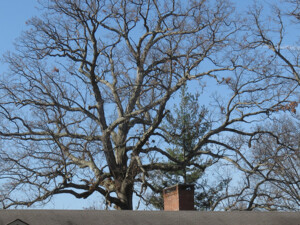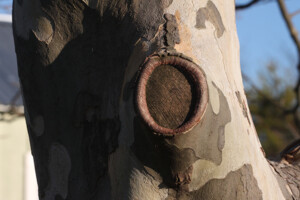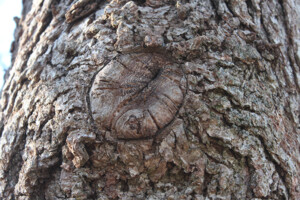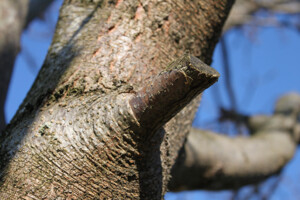Urban trees live in a very different environment from trees in the forest. They are often surrounded by pavement, struggle with compacted soils and absorb polluted air, while forest trees grow in loose shaded soils rich in organic matter. But there is one thing urban trees tend to have going for them: plenty of light and space to spread their branches. Forest trees, by contrast, must compete for light losing their lower branches as they struggle to reach the life-giving sunshine.

From our perspective as urban dwellers we could say that forest trees prune themselves as they grow. City trees, on the other hand, require pruning so that they can accommodate the activities taking place around them. For most people pruning a tree means simply cutting off the branches that are in the way of mowers, pedestrians, cars, buildings, or any other object that we value in our human-made world. Few consider pruning to give a tree a healthy structure so that it can live a long and trouble-free life in the urban environment. Part of the reason is that pruning cuts made for the tree’s health require some understanding of its growth and are less intuitive than the cuts we make for human convenience.

The question how a tree will live in the space where it is placed arises a year or so after planting when it has largely recovered from transplant stress. During the first year it needs all its leaves to photosynthesize and help it develop a strong root system, but after that it can shed up to 25% of its foliage during pruning without suffering harm.

Young trees in open spaces often develop one or several strong branches starting low on the trunk. Or a central leader may split a few feet above ground into two equal upward striving trunks which will cause instability later. To correct either of these situations seems to require cutting off a large portion of the young tree, more than the 25% it could easily cope with. There is, however, a better approach. Removing those large branches (or the unwanted co-leader) should be spaced out over two or even three years. In the first year they can be cut back by one half or one third of their length. This encourages the tree to invest more of its energy into its trunk and other branches while the trimmed branch (or co-leader) becomes weaker and thinner by comparison. Eventually it can be cut off altogether.

Good pruning cuts are always made at the base of the branch being pruned so that the wound can heal quickly. Branches usually form a “collar”, more or less obvious, where they grow away from the trunk or a larger branch, and the cut should be made just outside that collar. The wound that results diminishes in size as the bark encircles it and eventually grows over it. The pruning wound will not heal as long as a dying stump protrudes from it. (See illustrations) A tree that gracefully occupies the place for which it was designated is an object of great beauty. It spreads its evenly spaced branches without encumbering humans and lives in harmony with the built environment. Watching and gently steering its growth is a gratifying project that can help us reflect about the intersection between the social and the natural worlds on the basis of personal experience.
Beate Popkin
